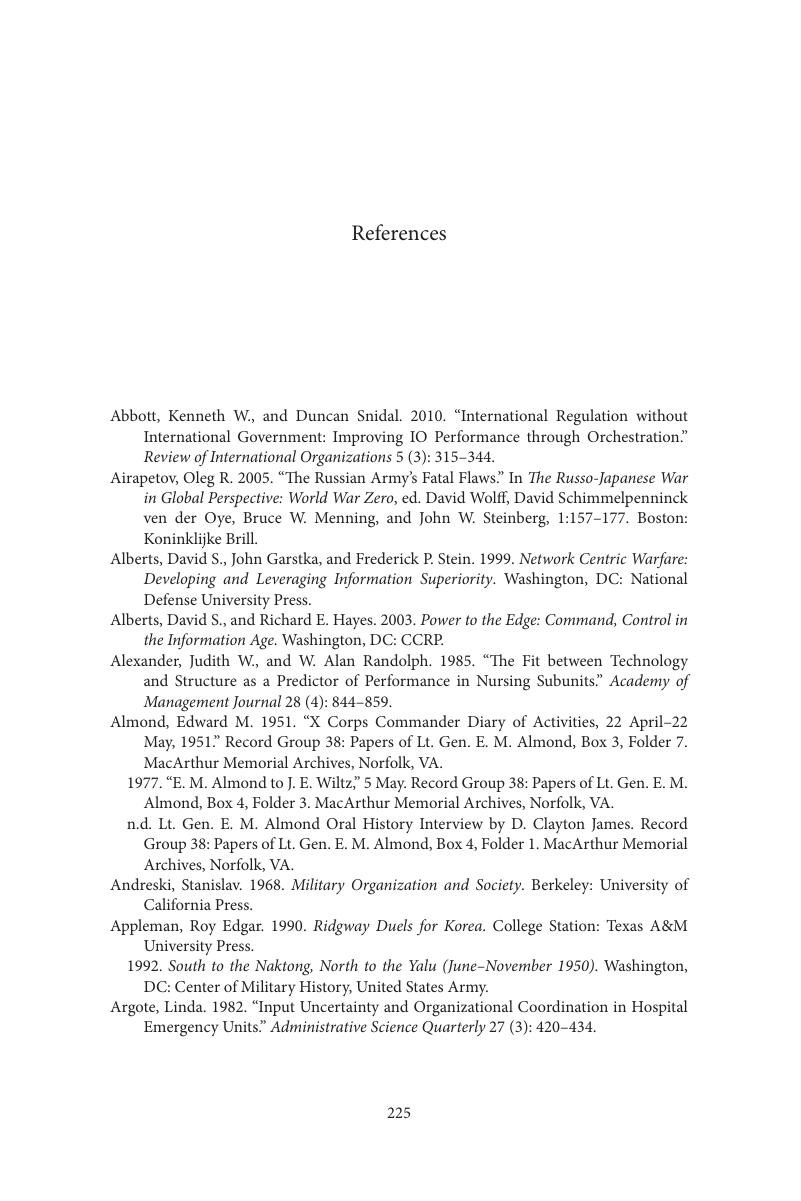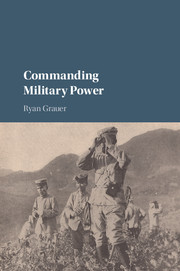References
Published online by Cambridge University Press: 05 July 2016
Summary

- Type
- Chapter
- Information
- Commanding Military PowerOrganizing for Victory and Defeat on the Battlefield, pp. 225 - 252Publisher: Cambridge University PressPrint publication year: 2016



